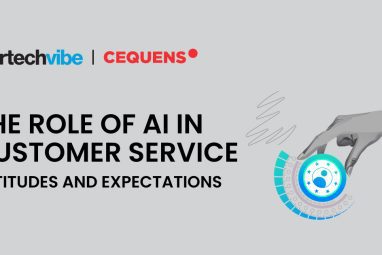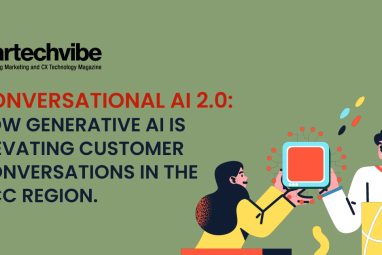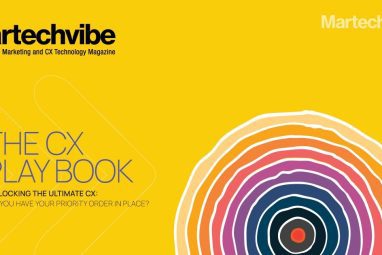39% Say Gathering Real-Time Analytics Is A Challenge: Report
The report indicates the importance of actionable insights into customer behaviour to build an impactful engagement strategy and provide a delightful customer experience.
Topics
What to Read Next
- TripleLift Announces Partnership with Attain to Unify Context and Commerce
- Seedtag Partners with IRIS.TV to Expand Contextual Signals for CTV Targeting
- Magnite, Cognitiv Announce Deep Learning Integration for Real-Time Curation
- Dscout Announces Integration with HeyMarvin
- Comscore Launches Program-Level Capabilities within CCM

MoEngage, the insights-led customer engagement platform, released the findings of The State of ILE Report 2022 | Middle East Edition. The report indicates the importance of actionable insights into customer behaviour to build an impactful engagement strategy and provide a delightful customer experience.
Digital adoption in the Middle East is growing exponentially with a massive shift in customer preferences and buying behaviour. Almost 67 per cent of customers have shifted to digital channels to engage with brands. Therefore, marketers must design different engagement strategies focusing on digital interaction and ramp up their omnichannel customer engagement strategies.
In well-timed research, MoEngage surveyed 2000+ male and female marketers, product managers, and C-level executives in the Middle East (from five industries: banking and fintech, media and entertainment, consumer shopping, ed-tech, and hotel & grocery) to understand their approach to customer engagement, the insights they currently analyse, and the engagement platforms they are utilising.
Key Findings:
- Almost 26 per cent of the brands in the Middle East prefer CRM platforms, closely followed by Customer Data Platforms (CDP) and Multichannel Customer Engagement platforms (CEPs).
- The top challenge for almost 39 per cent of marketers were gathering real-time analytics. At the same time, a lack of understanding around which channels are most compelling was the second most arduous issue (18 per cent). Other concerns were around inactionable data and the inability to personalise customer experiences.
- Nearly 44 per cent of marketers claimed that their marketing, social and mobile teams are working in silos and engaging with customers separately. Almost 28 per cent also said that teams within brands conducted joint planning but separate execution.
How Marketers Are Drawing the Insights
- Insights considered: Only one in four respondent companies said they measure time, capital, and resources to assess interest, choice, or affinity. The respondents also follow customer demographic data, such as name, age, and location. Only (14-18 per cent) claimed that their brands are studying other aspects of customer insights such as preferred channel, the probability to purchase, churn or hibernate, and segment personas.
- Communication personalisation: Customer attributes like language, channel, and content affinity, and 29 per cent analyse behavioural-based data like recent, frequency, and monetary value (RCM). However, only 10 per cent of the brands utilise data around churn and dormancy, while 7 per cent prefer to use patterns of segments for personalised communication.
- Different attributes by different industries: Media and Entertainment, Education, and Hospitality industries utilise customer attributes for personalised communication, whereas Banking and Finance and Consumer Shopping prefer behavioural-based data.
- Customer journey and engagement campaigns: Around 44 per cent of marketers consider ‘most optimum path to conversion’ as their go-to data point while measuring journey insights, followed by drop-off moments (30 per cent) and delightful/aha moments (26 per cent).
- The business impact of insights: While less than half of the marketers stated that they had improved their metrics, 32 per cent of marketers claimed that the insights they gathered were ineffective. Almost 29 per cent of marketers were undecided about the answer.
- Channel touchpoints across all verticals and brands, the most frequently used touchpoints in a digital, omnichannel strategy remain Email, Social Messaging Apps (WhatsApp, Facebook Messenger), and SMS. Almost 27 marketers use digital channels such as social, web, and mobile to send personalised product or content recommendations. Around 26 per cent of them also use these channels to educate customers. About 31 per cent of survey respondents prioritise channels for communication-based on customer preference, closely followed by the performance of each channel (30.9 per cent) and competitor analysis and industry best practices (30per cent.
- At the same time, factors such as behavioural attributes to figure out a channel and time preference remain the lowest at almost 8 per cent.
Brands have to draw insights from various forms of data, and their current tech stack can be a limiting factor. Marketers and brands must shift to an insights-led customer engagement platform to stay relevant and create hyper-personalised experiences.
Maintaining customer preferences while deciding on the preferred channel is a good practice adopted by marketers. However, brands must draw campaign insights from attributes, purchases, likes, and clicks instead of just engaging customer segments. However, pivoting on just the campaign-centric insights might provide a skewed analysis.
It is where CEP goes a step further and helps build a unified customer profile and drive a personalised, omnichannel experience for customers. It removes siloed operations by bringing data from different sources under one umbrella, assisting teams with a 360-degree view of customers.
Kunal Badiani, Regional Head, MEA, MoEngage, said, “As digital touchpoints evolve and the market becomes hyper-competitive, brands have to capture relevant data insights to provide personalised experiences with the help of new-gen technologies like analytics and predictions. Brands that adopt the right tech stack by shifting to an insights-led customer engagement platform stay relevant by knowing what their customers want!”
If you liked reading this, you might like our other stories
It’s An App. It’s A Website. It’s PWA!
The Rise of The Subscription Economy









































































































